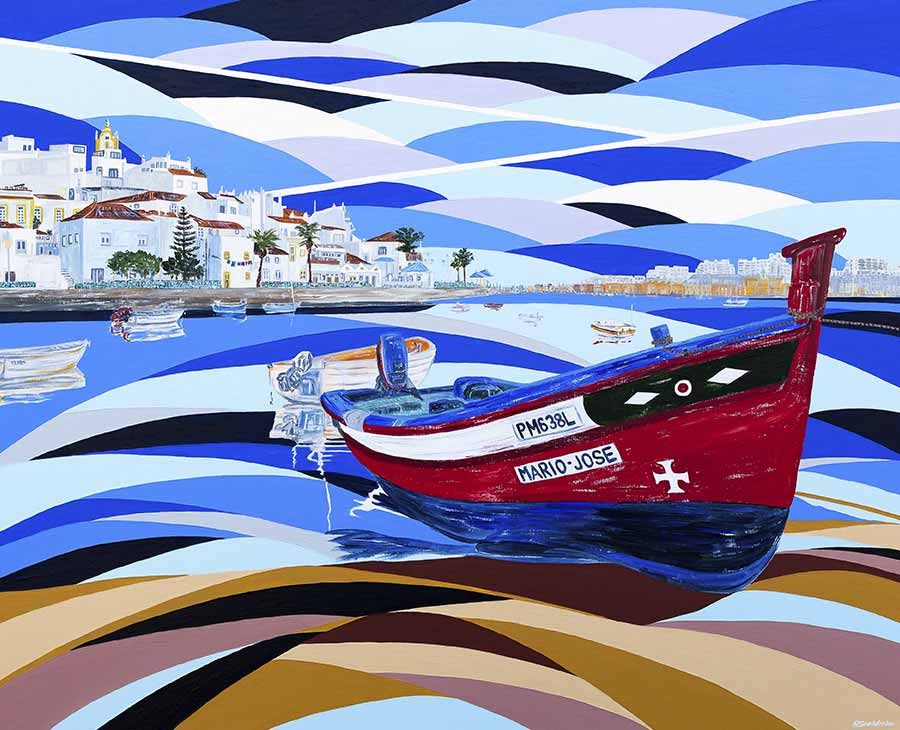RENEW
RESTORE AND REWILD
RENEW
RESTORE AND REWILD
While new boardwalks stretching along the coast are protecting the vegetation from destruction by the trampling of human footsteps, an ambitious scheme in the Côa Valley is underway to reintroduce indigenous plants and animals into their natural habitat.
The Côa Valley has a checkered history that stretches back in time for more than 150,000 years. Subject to out-of-control fires, this account also retells how the valley was almost washed away. Today it is about to be reborn at the centre of an astonishing development plan.
Etched into the valley’s rocks, there are images of ibex, wild horses and ox-like aurochs. These pictures have been dated to the period of early hunter gatherers. Tools from the Stone, Copper, Bronze and Iron Ages confirm a continuous human presence when the Côa Valley would have consisted of grasslands and deciduous forests, chestnuts, holm and cork oaks, junipers, and other mostly fire-resistant vegetation. A variety of herbivores such as red and roe deer, rabbits and hares roamed the land and predators such as the Iberian lynx and wolves would have preyed upon them. In the skies above, other secondary consumers such as Imperial eagles and scavengers like griffon vultures thrived.
Inevitably, the introduction of farming methods began to change this wild and natural landscape. Generation after generation it was agriculture that supported rural communities. Surviving, despite searing temperatures in summer, and wildfires, it was a harsh way of life that began to collapse in the 1960s when young people were lured away to well-paid jobs in urban-areas and abroad.
Only the older generation remained, and recognising that these rural communities were reaching an end, the Portuguese government stepped in. Attempting to stimulate the economy by producing timber, they introduced huge plantations of eucalyptus and pine. What had not been taken into account, however, was that these trees are highly flammable, producing their own combustible oil. They evolved in different environments, and are unlike the indigenous trees that are fire retardant with thicker cambiums, the growth-giving section of the trunk.
As households and communities of people dwindled there were fewer domestic animals to graze the land, and saplings shot up among untended vegetation. With few local people around to pressurize the municipalities, they failed to maintain effective firebreaks and clear areas near roads.
The Côa Valley had always suffered from thunder and lightning storms, but now the scale of the resulting wildfires was bigger and far more destructive. Hardly any wonder those who could moved on, and a ghost valley of mostly ruined farmhouses, neglected and burned land remained.
Taking the initiative
By 1989 the EDP (Portugal’s state electricity company) saw new potential intending to flood the valley and build a hydroelectric power station. The Côa Dam was half completed when prehistoric engravings and paintings were discovered in the area that was about to be flooded. A feud began between the EDP and a team of international archaeologists, but after six years of intense arguments a new socialist government put a stop to it and saved the valley.
It was declared a protected area, and a national park was opened in 1996 with a visitor and study centre that attracts enthusiastic anthropologists, archaeologists and a few curious tourists.
More recently, the environment has become the focus of attention. Various NGOs have become involved, as well as departments from Aveiro and Lisbon University and organisations such as Rewilding Europe.
Starting at Faia Brava, a small nature reserve in the valley, the landscape is being restored to how it once was. Wild Garrano horses have been introduced ,and herds of tauros (related to the aurochs, Europe’s native wild cattle) have begun to graze and fertilise the land. The reintroduction of roe deer and ibex could to be next. As the soil improves, the vegetation is likely to diversify attracting more herbivores. More rabbits mean more food for Iberian lynx ,and with more wild prey in the region more predators can be supported. If all goes according to plan, these predators will be needed to keep the population of herbivores under control.
The EU’s LIFE WolFlux project recognizes that these conditions will attract more wolf packs into the area, some of them coming from across the border in Spain. This is the most contentious issue, but to deter them from attacking livestock, the few farmers that remain will be provided with Serra da Estrela mountain dogs. One of Portugal’s oldest breeds, these loyal and fierce animals, raised to protect their owners’ herds, really do discourage wolf attacks. The plan to reinstate them in their traditional role is a reminder of their previously important status.
Learning from the past is at the heart of the project known as Rewilding Portugal. Fittingly, it is the artwork of Paleolithic people that has saved the Côa Valley.
The Coa Valley was declared a protected area, and a national park was opened in 1996 with a visitor and study centre that attracts enthusiastic anthropologists, archaeologists and a few curious tourists.
Words – Carolyn Kain



